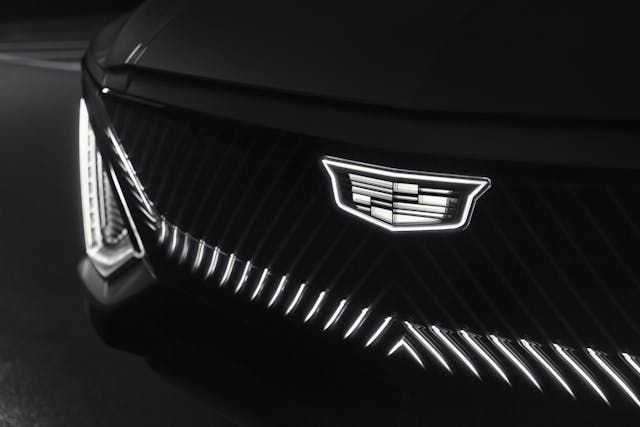Cadillac draws a line in the sand for its dealerships

General Motors and Cadillac have given their dealer network notice: get on board and make a six-figure investment into the marque’s all-electric future, or this train’s leaving you at the station. If dealers take the latter route before the November 30th deadline, they’ll have the option of a buyout.
Automotive News is reporting that General Motors is negotiating buyouts ranging from $300,000 to upwards of $500,000 for dealers who otherwise decline to buy into the necessary tools, infrastructure, and training needed for Cadillac to transition into a fully-electric product lineup. Such upgrades are said to cost dealers at least $200,000.
“We wanted to move fast and make sure dealers are ready for the acceleration,” Mahmoud Samara, vice president of Cadillac North America, told Automotive News. “This is purely an option for those dealers who feel the EV journey is not suitable for them.”
If GM were to foot the bill for its entire network of Cadillac dealers, the back-of-the-envelope total investment comes out to a figure under $200 million. Given that GM posted a $6.58 billion profit in what 2019—considered something of a down year—that total potential cost perhaps helps bring into focus the automaker’s real intent with this ultimatum: trim the fat from its dealer network.
The plan is reminiscent of GM’s 2016 buy-out program, which was intended to reduce the over-saturation of dealers in various markets. Cadillac in particular suffered from too many dealer locations, resulting in a relatively low number of cars sold at each despite fixed overhead costs.
Such a tactic is not unique to General Motors. Even entry-level brands like Kia and Hyundai have asked their dealers in the past to make investments in the showroom and shop in order to facilitate sales of higher-end models like the K900 and Genesis, or even the early hybrids, but few of these instances concerned such a comprehensive switch to a polarizing technology.
“We had discussions with all the dealers around what is our EV journey, how are we going to get there? It was a very open, transparent discussion—allowing all dealers to understand and buy in,” Samara told Automotive News.
Franchises who accept the option will be able to transition slowly into retiring their business, with new-car allotments through 2021 and continued access to GM’s pre-owned auction network through 2024. For dealerships, the deal is bittersweet. Some see it as a better bargain than the 2016 buy-out option, while others are wary of losses to long-term profits.
“If I’m 50 years old and planned on keeping [the dealership] for 20 more years and making half a million a year, how does $300,000 to $500,000 make me whole?” Len Bellavia, founding partner of Bellavia Blatt law firm in Mineola, New York, told Automotive New. “Any franchise on its worst day could be worth over a million dollars, unrelated to how many cars the dealer is selling.”
Smaller dealerships, which have moved a relatively low number of new cars lately but held-out from the 2016 option, stand to benefit most should they want to steer clear of EVs. For larger dealerships that thrive in the seven-figure ranges yearly, the $200,000-and-change necessary for buying into the EV generation ahead may go down about as smoothly as cough syrup when the check is finally cut, but for the practical necessity of future business viability it might be the only option. Those larger dealerships, in the end, are the ones best positioned to leverage their financial interest and overall resources to follow GM into its planned all-electric future.
What’s clear is that an all-electric omelette is in the works, and some eggs are bound to be cracked.

